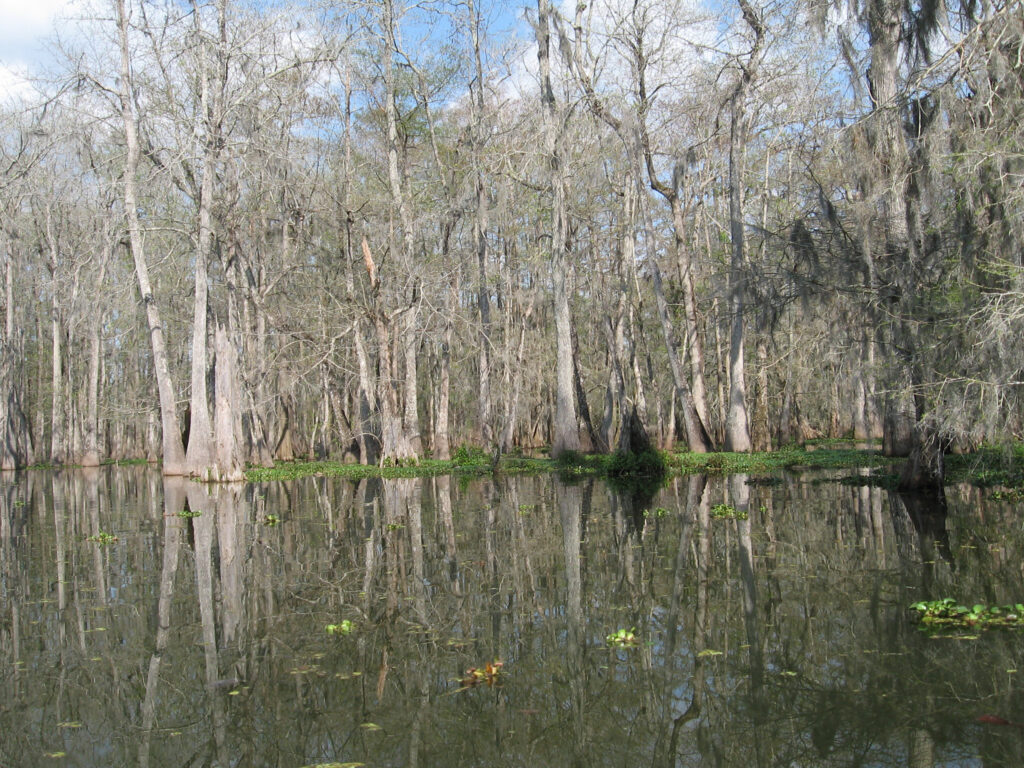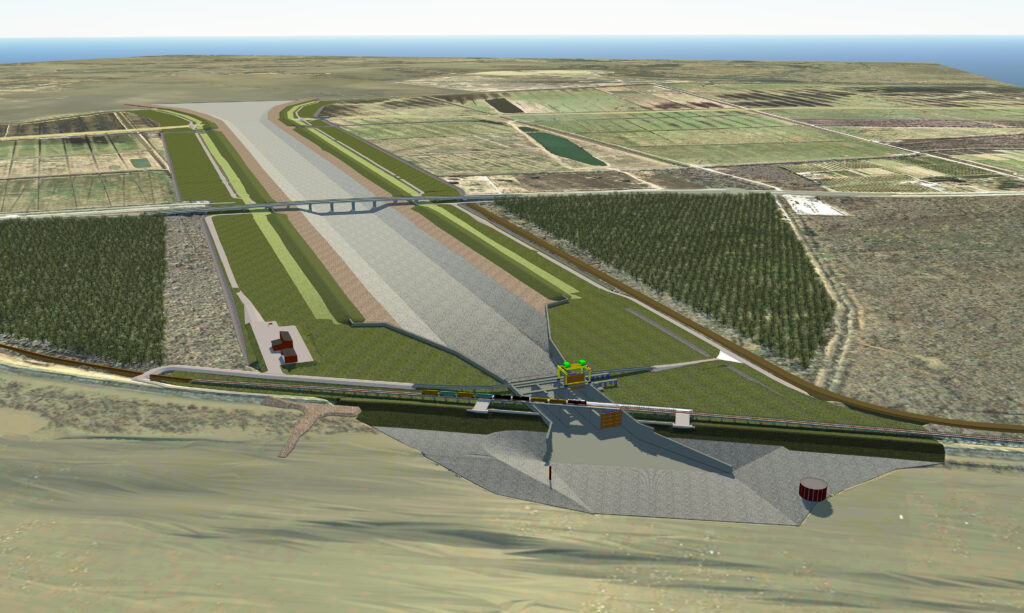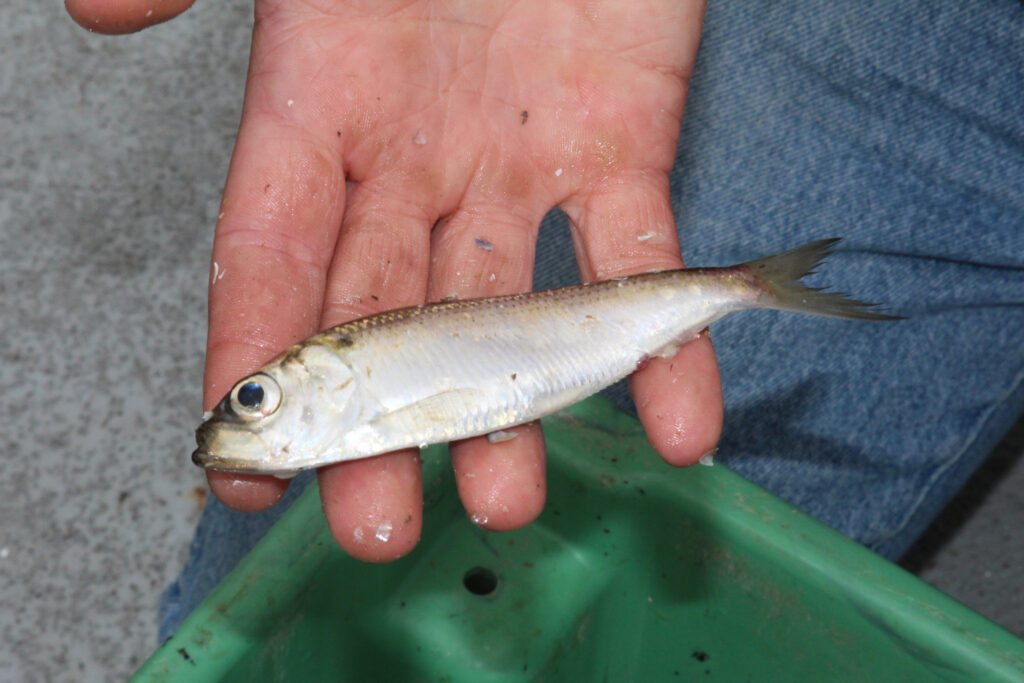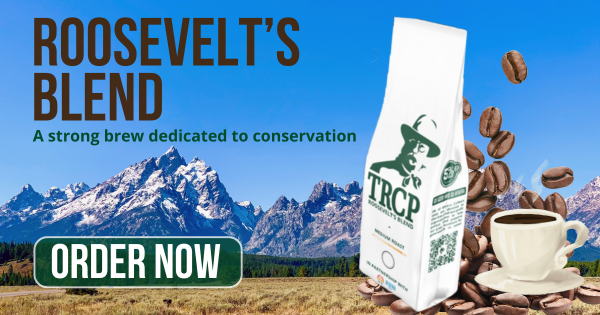The swamp-fringed Lac Des Allemands is losing ground without historical sediment flows, but Mississippi River restoration efforts offer a lifeline
Lac Des Allemands is one of many storied freshwater fisheries in South Louisiana.
Located about 60 miles from the Gulf of Mexico, it’s the northernmost open body of water in the Barataria Basin, a 1.5 million-acre expanse of freshwater cypress and tupelo gum tree swamps that give way to fresh, brackish, and salt marshes, open bays and lakes, and eventually a chain of islands that form the barrier between the basin and the Gulf.
An ambitious angler in the right vessel could conceivably start the day catching redear sunfish in Des Allemands, make a move 25 miles south to fight redfish in the marsh near Lafitte, then jump through Barataria Pass at Grand Isle 25 miles from there and catch red snapper in the Gulf to end the day. I haven’t tackled that challenge yet, but was fortunate to fish Des Allemands recently with my friend Marsh Man Masson (check out the video below), when I saw ominous signs that the marsh is slowly dying.
Swamps Born of Sediment Flows
The entire Barataria Basin was formed by sediments and nutrients flowing from the Mississippi River over several thousand years. Those resources stopped flowing into the basin over the last 200 years as Bayou Lafourche, its western boundary, was dammed and levees were built along the lower Mississippi River to control floods and aid river navigation.
On average, about 10 square miles of wetlands have been lost each year in the basin since it was isolated from the river. Oil and gas exploration and manmade shipping canals have changed the region as well. Then there was Hurricane Ida, which slammed into the basin as one of the most powerful storms to ever hit the U.S., destroyed 100 square miles of coastal wetlands in August 2021, the overwhelming majority of them in the Barataria Basin. It also caused massive fish kills around Lac Des Allemands as bacteria blooms and saltwater intrusion sucked the oxygen from freshwater and brackish marshes.
The sad truth about Des Allemands’ moss-laden, fish and wildlife-rich cypress-tupelo swamps is they are dying, though – unlike a marsh – it may be hard to see.

An Almost Invisible Death
When a marsh sinks, erodes, and eventually becomes open water, which has happened more in the basin in the last century than anywhere else in the world, the damage is obvious. One day there’s marsh. A year later, that same marsh is gone, replaced by shallow open water.
Swamps die differently. Trees starved of sediment and nutrients slowly perish. As the canopy opens, more and more grasses grow, rooted in feet-thick layers of muck and dying organic materials. Those grasses are much more vulnerable to hurricanes than hard-rooted trees. Invasive vegetation takes over and dissolved oxygen wanes in backwater areas, leaving fish fewer places to spawn, feed, and hide. Biological productivity dissipates over decades, leading to fewer successful bass and panfish trips and a whole lot fewer commercially important creatures like crawfish and channel catfish. Even ducks stop utilizing the area as wintering grounds.
The Des Allemands swamp is not the only one in the Mississippi River Basin dying a slow death. With so much attention, law, and policy directives focused on managing the river for flood control and navigation, with little regard for the ecosystems over the last 150 years, swamps and historic floodplains are struggling to continue to be productive fish and waterfowl areas. Nearby communities that have enjoyed the natural protection and flood retention of healthy swamps also are becoming increasingly threatened by sea-level rise, subsidence, levee over-topping, and nutrient loads that could be better filtered by allowing the river to flow through those swamps again.
Hope for Louisiana’s Wetland Habitats
The TRCP is working with a coalition of conservation organizations to engage the U.S. Army Corps of Engineers and help guide an ongoing effort called “The Lower Mississippi River Comprehensive Management Study.” Congress has instructed the Corps to identify ways to manage the Mississippi south of its confluence with the Ohio River with an eye towards improving flood control, habitat, natural infrastructure, and recreational access.

If the Corps listens, reconnecting the Mississippi to swamps like Des Allemands will be at the top of the list of places to start.
Read more about recent Mississippi River Delta restoration efforts here.







